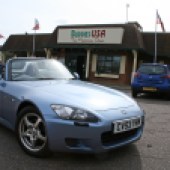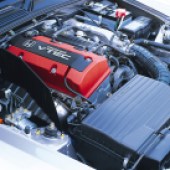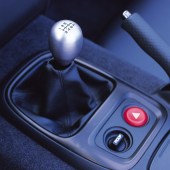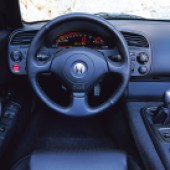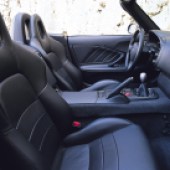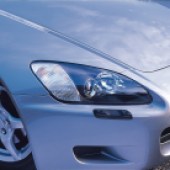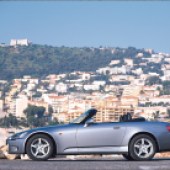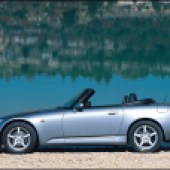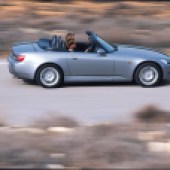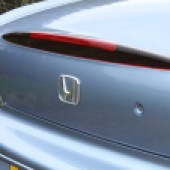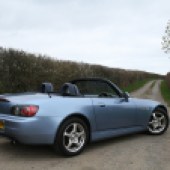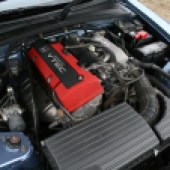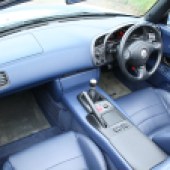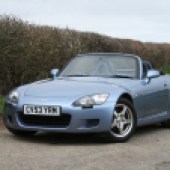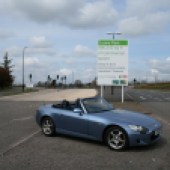There is a lot more to the Honda S2000 than its powerful ‘screamer’ of an engine. It’s a modern classic sports car that’s a joy to drive and is practical to own
When a company like Honda decides to build something special to shout about its 50 years in business then you know the result is going to be impressive and so it was when the wraps came off the S2000 in 1999.
Fresh on the heels of the technology showcase which was the NSX, the S2000 was in concept a kind of grown-up Mazda MX-5, taking that car’s back-to-basics approach but adding significantly more sophistication and nearly double the power output.
The heart of the S2000 was its engine: a 2.0-litre DOHC four-cylinder into which the firm threw the total of its accumulated knowledge over its half-century of existence, with many of the design team taken from the Formula 1 engine programme. The result was a power output of 240bhp. This wasn’t unusual for an engine of that capacity and that time, but what was highly unusual was it being achieved without forced induction – instead it was done by adding the Honda’s trick VTEC variable cam technology which enabled peak power to come in it at a heady 9000rpm.
With VTEC providing two sets of cams – one for tractable low-revs work and one for maximum power at high revs – this also meant the S2000 was as docile in everyday use as a basic Civic and could meet the strict California emissions regulations. Keep your foot in it until the needle hit 6500 rpm though and the change in character was dramatic as the VTEC did its thing and the needle leapt to the 9000 rpm redline. At this point, the short-shifting six-speed box came into its own and the grip afforded by the double wishbone suspension on all four corners was much appreciated.
The body was designed to achieve class-leading rigidity but the S2000 also weighed in at a modest 1260 kg, meaning performance was lively: 0-62 mph in just 6.2 seconds and a top speed of 150 mph. Not bad going from a 2.0-litre four-pot.
All of which means there’s nothing quite like the S2000. Yes, there are open two-seaters which provide similar performance but none of them manage it with such elegance of engineering and without using either much larger engines or at least one turbo. For that reason alone, it deserves the status of modern classic and that’s before you factor in the superb Honda build quality and the neat styling which successfully updated the traditional roadster shape without resorting to clumsy retro. In fairness, it did take Honda while to perfect the S2000’s dynamics – early cars lacked the body control and cornering grip to match their power or the stiffness of the body. This was quickly addressed, and later improvements answered criticism that the now more capable S2000 still felt a bit remote and lifeless. Further revisions were aimed at improving the car’s rather choppy ride quality, but the Honda always remained a car where the experience was dominated by that magnificent power unit. The S2000 always found itself caught between two worlds, being neither an accessible mass-market roadster like the Mazda MX-5 nor an uncompromising enthusiast’s car like a Lotus Elise but something in between. And that’s exactly why it appeals to many people.
Bodywork
For once, we won’t be advising you to grovel under the car looking for structural rust, but instead be on your guard for accident damage. It’s a powerful, lightweight car driven by its rear wheels and with pre-2006 models not coming with electronic traction control they’re notoriously easy to spin, especially in the wet on less than perfect tyres. For that reason it pays to make the usual checks of panel gaps, overspray and paint mismatch.
The electric roof is generally reliable too, although many don’t sit flush with the bodywork when lowered as the elasticated tensioning straps tend to weaken with age. Replacement Honda S2000 roofs are available which will make the hood fold neatly again. If the roof catches at the screen rattle at speed, this can be down to worn striker plates which are easily replaced with later parts which are thought to be made from harder metal.
Engine and transmission
Considering its impressive specification, the Honda engine is surprisingly free of any issues, with most problems being niggly rather than fundamental. A faulty MAP (Manifold Absolute Pressure) sensor can cause intermittent rough running, ‘kangarooing’ at slower speeds and misfires in the VTEC rev range but is easily cleaned or replaced. Corroded wiring to the ECU can cause rough running problems which can be tricky to diagnose. Other problems can include failed oxygen sensors, intake air temperature sensors and injectors but all are easily sorted and are simple DIY fixes too. A noisy cam chain can be caused by a failing tensioner.
The gearbox in the S2000 was developed specially for the car with the aim of making it light and narrow in order for the engine and box to sit as far back as possible in the bodyshell. The design features lightweight gears working with a similarly lightweight engine flywheel. While that may sound like a recipe for flimsiness, it is generally a reliable unit although some hard-driven cars have shown problems with the synchromesh on the higher gears. Some owners have reported that heavy clutch action has been cured by carefully greasing the release fork through the aperture in the bellhousing using grease on the end of a piece of wire.
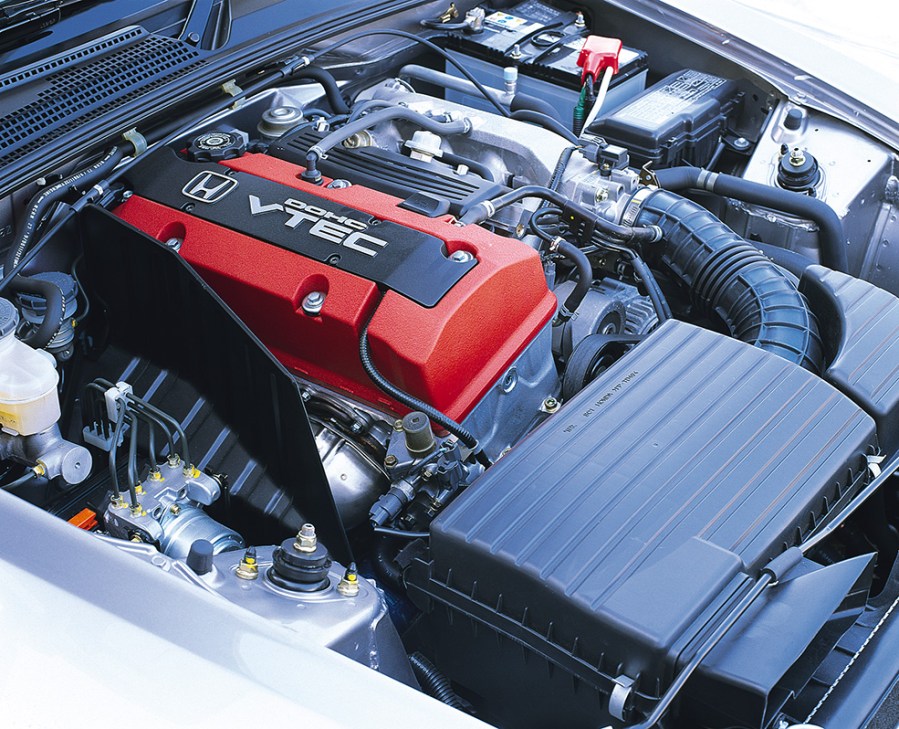
Suspension, steering and brakes
While the Honda S2000 generally enjoys a very positive reputation for its dynamics and handling, the suspension is one of the car’s few Achilles’ Heels. It’s described as an ‘in-wheel’ design by Honda on account of the componentry being shaped so that most of the structure can be accommodated inside the standard 16-inch wheel, in turn allowing a lower bonnet and rear deck.
In standard form with everything working properly, the result is superbly balanced handling and a lovely taut feel, but sadly many cars are suffering from seized wishbone bolts where they pass through the centre of the metalastic bushes connecting them to the bodyshell. This isn’t a problem until a wheel alignment is needed – and these cars are very sensitive to the correct alignment. At this point you’ll discover that the bolts can’t be moved and that Honda will supply only a complete arm and not the bush separately. Many keen owners and specialists will grease the bolts with anti-seize to prevent this happening. At the front end, the castor or ‘compliance’ bushes can split which becomes an MoT failure. Again, Honda doesn’t sell the bush by itself, but aftermarket parts are available.
The S2000 is very sensitive to the correct tyres and the original Bridgestone ES02JZ were specially developed for the car. These were later replaced for the 2004 model by Bridgestone RE050s which are a well-regarded tyre and a good replacement for the originals which are no longer available.
In order to reduce the parasitic drag from an engine-driven hydraulic pump, Honda went for electric power steering on the S2000. Derived from the NSX setup, it varies the level of assistance according to road speed and also uses a variable gearing ratio to provide progressively quicker steering as the wheel is turned further. It’s a reliable system and a dashboard warning light will tell you if something’s wrong. The most common reason for it coming on is a faulty signal from the steering torque sensor. While the sensor itself can fail, it’s likely to be dried up grease and collected dirt in the sensor itself leading to the erroneous readings – cleaning the sensor and applying a new dab of high temperature grease will solve the problem at little cost. But if it’s the motor or the EPAS control unit itself that is the issue then sorting it will be costly.
In terms of brakes, you’re looking at 11.8-inch vented discs on the front with 11-inch solid discs at the rear and they’re well up to the car’s performance. If a car has uprated brakes, ask yourself why: it could have seen a fair few track days. Service parts aren’t too expensive for a car of this calibre: a set of front pads is £47, although the front discs are costly at around £90 each.

Interior, trim and electrics
It’s a Honda, which means the interior is a bit bland and a trifle ‘plasticy’ but exquisitely well put together, so if you find any loose or rattly trim then it means someone has been in here – probably fitting aftermarket stereos or alarms. If you do see an upgraded stereo, check that it works with the original remote controls. What seems to be a squeaking dashboard can often be the bonnet release catch or the rear view mirror mounting. The leather seats are very durable but the material can start to wear thin on the driver’s seat on high-mileage cars. Early cars had a plastic rear screen in the hood which can crack, and check the hood itself for tears or splits. But a new hood is not a big cost on an otherwise sound car – no more than £1000 for a high-quality mohair one and significantly less for a like-for-like replacement for the original vinyl item.
If you find a puddle of water in the passenger footwell, don’t assume the roof is leaking – it’s quite likely the condensation drain from the air conditioning unit which has been kicked off. It’s a simple job to slip it back into place.
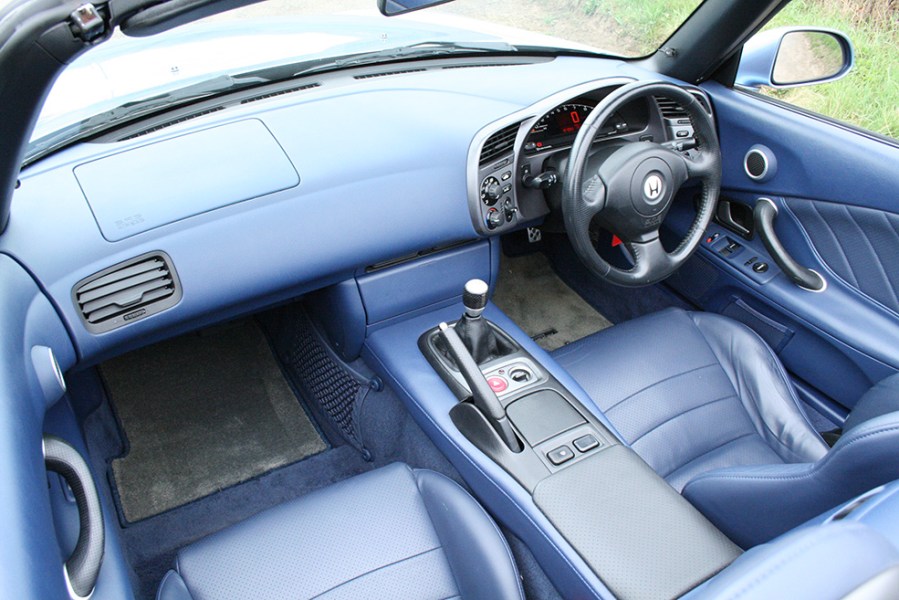
Honda S2000: our verdict
The S2000 is a ‘like it or loathe it’ sort of car. Some people will not gel with how hard the engine needs to be worked to really shine and how relatively uncompromising the car’s suspension setup is – the Honda is really a bespoke sports car rather than an accessible roadster. But that’s exactly why it has always had devoted adherents too. Being a Honda it can be used regularly with little sacrifice or worry about reliability, even at high mileages, so long as the particular servicing needs are met, and for all its short-travel suspension and reputation for twitchy handling it is quiet, economical, refined and equipped enough for daily use or long journeys. But its unique character, with its screaming engine, close-ratio gears and responsive chassis also make it a perfect car to be left just for fun at the weekend when you can seek out the good weather and the best roads. And because it’s a Honda, there’s no reason why it can’t also do both duties. Prices are trending upwards now and it is entering firm modern classic territory, so if you purchase a good one and look after it, it shouldn’t prove a costly indulgence.
We would not advise spending less than £7000 or so on an S2000 unless you had budget in hand to put right some cosmetic and mechanical issues. £8000-10,000 will cover early high-mileage cars, probably with six-figure mileages but still in sound condition. Most S2000s now sit in the £10,000-20,000 field, with relatively low mileage and increasingly good condition and spec. Near the top of this range is where the best value for money is to be had at the moment. Cars up for more than £20,000 should be in excellent condition in all respects, with a full and comprehensive history and low mileage. A great investment and a weekend toy, but perhaps too good for regular or daily use around the year.
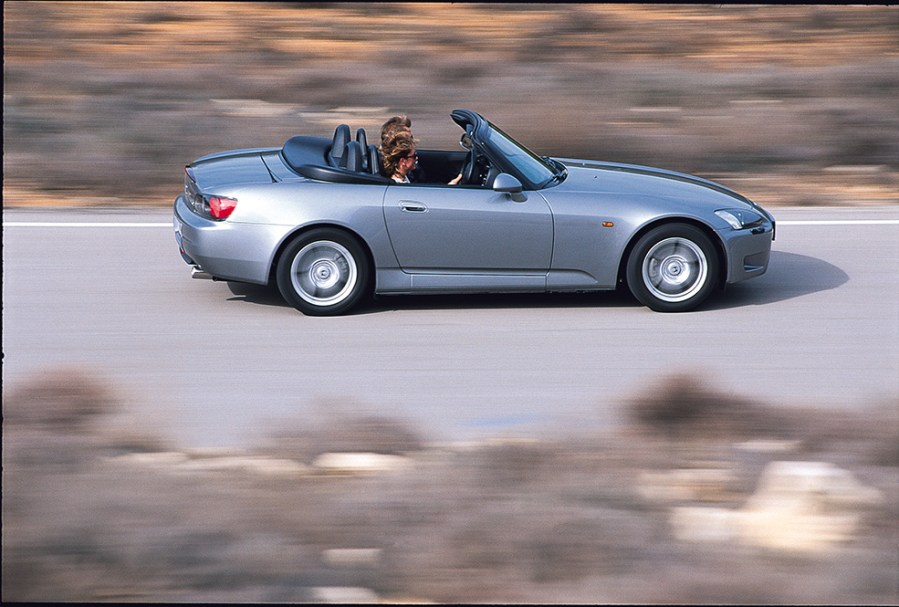
Honda S2000 timeline
1999
Honda S2000 launched for the 2000 model year. 240bhp 2.0-litre DOHC VTEC engine, six-speed manual gearbox, limited slip differential as standard. Four-wheel double-wishbone suspension and 16-inch wheels. Wind deflector and aluminium hard top are optional extras.
2001
Wind deflector becomes standard equipment and a digital clock is added to the centre console display.
2002
Suspension and steering changes made to improve the S2000’s steering feel, turn-in response, rear-end grip and body control. The hood gains a glass rear window with a heating element. Improved stereo system and leather gearknob and console covers added to the interior.
2004
A major update results in the ‘Mk2’ S2000. 17-inch wheels and new tyres are fitted. Suspension is retuned with new spring and damper rates and revised geometry to improve stability when cornering. The chassis sub-frame is redesigned to increase rigidity and the gearbox received carbon-fibre synchromesh rings. New front and rear bumpers, restyled headlamp assemblies, LED tail lights and oval exhaust tip trims complete the cosmetic facelift.
2006
Electronic fly-by-wire throttle introduced, allowing for optional traction control. Head restraints move to a solid design without the central hole as found on earlier cars.
2008
Traction control becomes standard fitment, and further revised springs and dampers introduced to improve ride quality.
2009
UK sales of the Honda S2000 end with the GT spec model (with a hard top and an external temperature gauge as standard) and then the Ultimate Edition and GT Edition limited run cars, both featuring unique interior trim and cosmetic details on mechanically standard cars. Total production was 110,000 examples.



